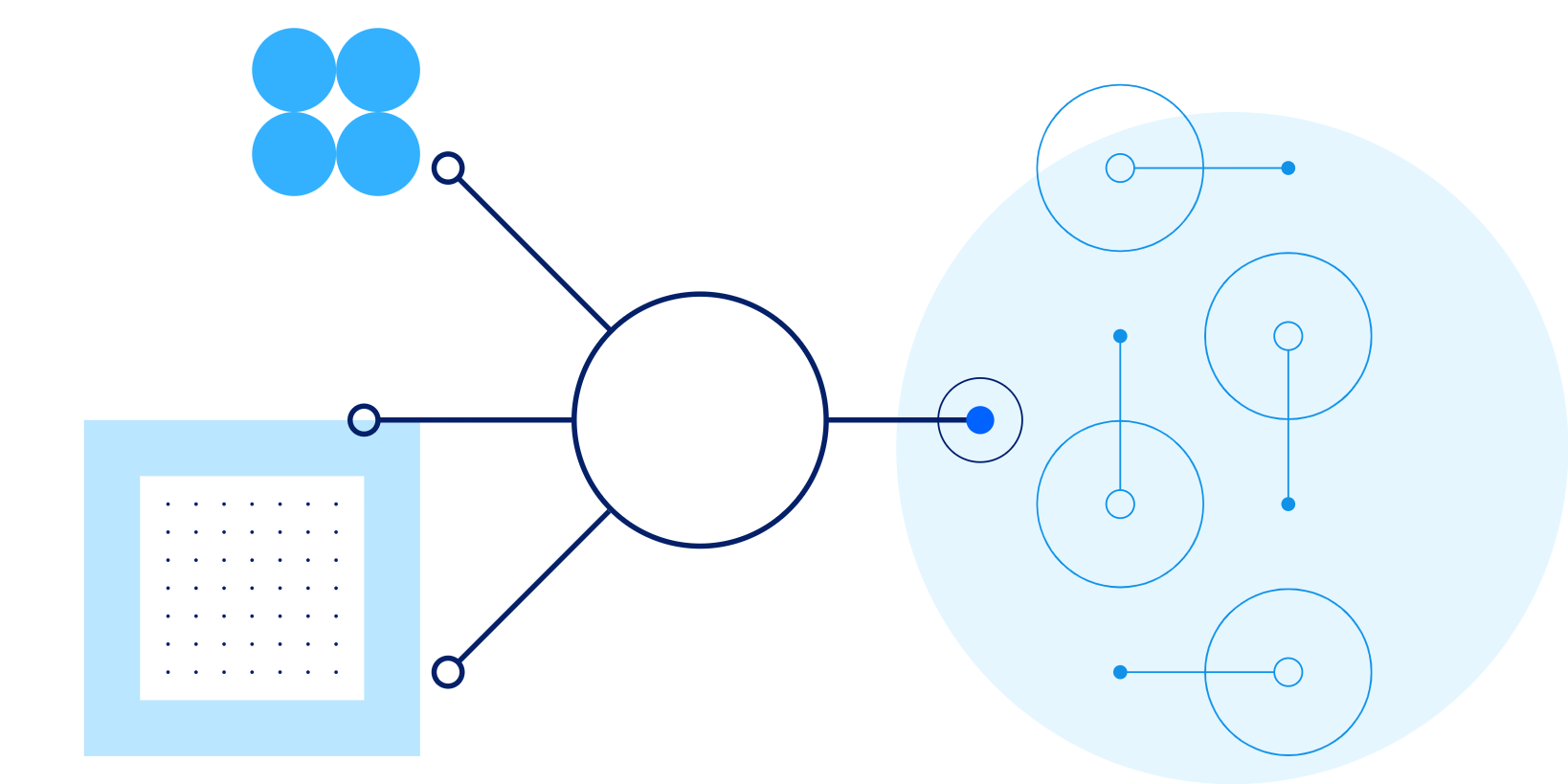About cookies on this site Our websites require some cookies to function properly (required). In addition, other cookies may be used with your consent to analyze site usage, improve the user experience and for advertising. For more information, please review your options. By visiting our website, you agree to our processing of information as described in IBM’sprivacy statement. To provide a smooth navigation, your cookie preferences will be shared across the IBM web domains listed here.
Perspectives
Data Fabrics – Weaving Culture Change into Digital Transformation
13 April, 2021 | Written by: Indy Dhami
Categorized: Perspectives
Share this post:
Digital transformation has been a business buzzword for decades and there are many definitions from the major strategy consultancies, technology giants, universities and thought leaders. A data fabric however, is a new concept, but the market expected to grow to $4.5 billion by 2026, which is partly driven by an explosion of the cloud. IBM defines a data fabric as:
“A conceptual representation or architecture of how data assets will be organized”.
This may be in the form of blueprints or formal structures used to describe and visualise all enterprise data making critical data points accessible and meaningful.
A Culture Transformation Pattern
We are now in an age where data is the new gold and mining it with precision and innovation is central to business growth and success. Those organisations that place a strong focus on transforming culture and building capabilities during a digital transformation are 2.5 times more likely to succeed in their endeavours.
Yet, cultural resistance to change is often one of the main barriers during digital transformation. As the business and technology world evolves at lightning pace, specific people-based skills and capabilities are vital, yet the supply of relevant skills have not kept up with the rate of change. Many organisations are now finding themselves in the difficult position of fighting for the best talent whilst trying to maintain cultural and behavioural requirements.
Arkadi Kuhlmann, founder and CEO of ING Direct USA applied a successful new approach to retail banking by recruiting thousands of new employees with the aim of not sourcing them from competitors. He stated “If you want to renew and re-energize an industry, don’t hire people from that industry. You’ve got to untrain them and then retrain them. I’d rather hire a jazz musician, a dancer, or a captain in the Israeli army. They can learn about banking. It’s much harder for bankers to unlearn their bad habits.”
Notches in the Design
So, how do Chief Data Officers (CDOs) deal with the challenge of culture change during digital transformation and data fabric activities? In my experience, the most successful enterprises consider ten points that help drive culture change whilst weaving a data fabric.

1. Communicating a clear strategic vision – leaders must recognise the importance of end-state data capabilities, operating models and processes. The strategic scope and objectives must integrate into the business strategy and organisational DNA. Research suggests that senior leaders who communicate on progress, are eight times as likely to be successful.
2. Planning and prioritising meticulously – focus efforts on delivering value adding digital capabilities that protect the most critical assets. Digital transformations have similarities to Urban Planning, charting a path using a modular and scalable mindset.
3. Identifying strengths and gaps in skills – assess the current and targeted capabilities of individuals in both technical and soft skills. This can help pinpoint cultural and knowledge gaps.
4. Utilising golden sources of data – organisations maturing their digital capabilities must be able to leverage data and analytics to build a data fabric. Machine learning activities can also help accelerate the ability to utilise Artificial Intelligence.
5. Acknowledging that there are unknowns – Recognising an organisation’s own limitations and risks using a threat based and mathematical approach. Taking educated risks is key to digital culture change and risk quantification can provide meaningful decision making data.
6. Mapping the end-to-end business flow – building strong digital capabilities requires coordination and integration across business units, divisions and functions. Successful programmes must involve all entities of the business in order to model the components which support a data fabric.
7. Championing behavioural and cultural change – implementing change organisational culture and behaviours during a digital transformation is not simple. A consistent and clear message driven by top leadership combined with ethical values, education and clear communication are the foundations needed to ensure success.
8. Defining measures for success – measuring the impact of changes upon the business is critical. Given that the intangible elements of culture change make it difficult to define and assess in comparison to technology KPIs, it is important to establish both quantitative and qualitative goals with indicators of success.
9. Continually seek to be agile and improve – once new digital capabilities are operational, the challenge does not end there. A focus must be on maintaining employee motivation, ongoing improvement and innovation where processes are assessed for suitability and efficiency.
10. Embedding resilience holistically – cyber and operational resilience is non-negotiable and its inclusion from the outset of any digital transformation must include controls and measures to ensure security, privacy and data protection. A data fabric can bring additional benefits via security insights and contextual data when responding to cyberattacks or data breaches.
Overlocking Data, Digital Transformation and Culture
Digital transformations have formed a division in the way businesses are operating globally and following the COVID-19 pandemic this division will be most impactful to those who are not innovating. Considering a data fabric should be at the foundation of any business change strategy as it can provide greater insights through rapid data access, from mainframes to cloud stores. It can help transition from a traditional business model to a new culture of agile leadership, innovation, thinking, underpinned by technology and data to transform an enterprise.
IBM have recently been positioned as a Leader in two newly published Gartner Magic Quadrant report: the 2021 Magic Quadrant for Cloud AI Developer Services1 and the 2021 Magic Quadrant for Data Science and Machine Learning Platforms. I believe these reports recognise the need to focus on AI, and automation to generate critical insights through natural language processing during digital transformations.
For more information on the Gartner reports please follow: https://ibm.biz/Bdfjev
Gartner, Magic Quadrant for Cloud AI Developer Services, Van Baker, et al., 24 February 2021.
Gartner, Magic Quadrant for Data Science and Machine Learning Platforms, Peter Krensky, et al., 1 March 2021.
Note: Gartner does not endorse any vendor, product or service depicted in its research publications, and does not advise technology users to select only those vendors with the highest ratings or other designation. Gartner research publications consist of the opinions of Gartner’s research organization and should not be construed as statements of fact. Gartner disclaims all warranties, expressed or implied, with respect to this research, including any warranties of merchantability or fitness for a particular purpose.

Indy Dhami
IBM Associate Partner in Security Strategy, Risk & Compliance
More stories
By Helen Gowler on 3 October, 2024
Generative AI: driving a new era of HR transformation
Helen Gowler, Partner, EMEA Talent & Transformation Lead Today, I’m proud to be part of a company that’s committed to addressing gender bias in the tech industry. IBM is pioneering the use of AI to tackle this issue, and I’m excited to contribute to this effort. Our team is developing AI models that can detect […]
By Mark Restall on 18 July, 2024
Multi-Modal Intelligence Platform
Traditionally, data management systems provided only numerical or textual based business intelligence primarily for back-office users across finance, sales, customer management and supply chain. Today, we are increasingly seeing data management systems which drive key business functions requiring interrogation of multi-modal data sets from documents, presentations, images, videos to audio. This demands a more sophisticated […]
By Mark Restall and others on 16 July, 2024
The use of GenAI to Migrate and Modernise Organisational Core Programming Languages
GenAI is hugely powerful and supports a diversity of use cases by focusing on routine work – allowing people to focus time on value-add tasks, thus enhancing productivity. The focus of this use case is for an organisation which had previously focussed on a legacy set of tooling and programming languages and needed a way […]





























